I have tested out Zapier, Make.com and Pipedream.com from a developer perspective

Table of Contents
A few days ago, I took a deep dive into integrating my ScrapeNinja web scrapers into Zapier, Pipedream.com, and Integromat (Make.com) to better understand the market situation among low-code and no-code automation platforms. I wanted to do a simple job: extract some website data in JSON format from HTML every hour using ScrapeNinja, apply some simple JS processing, and put everything into Google Sheets. This journey took longer than anticipated, and this writeup contains a summary of my conclusions and key takeaways.
UPD May 2024: here is my review of n8n with some comparisons, as well.
Some background
I am a technical lead with over 15 years of web development experience. I have participated in building quite a few SaaS products, and I am still writing Javascript, SQL, and PHP (when I don't have to manage people). I am very comfortable building & consuming APIs, and a carefully written OpenAPI spec is a perfect piece of documentation for me. I am bootstrapping ScrapeNinja, which is a subscription-based API-first SaaS for web scraping. ScrapeNinja is still a one-man product but it is growing successfully and I am definitely enjoying my ride.
I have observed the rise of IFTT (winter of 2010), then Zapier, and Make.com, during the last 10 years, but this was mostly a glance at this, from the opposite side of a fence. During 2005-2012, I spent hundreds of hours building tens of websites using Drupal CMS, and if you don't know what Drupal is, this is one of the open-source monsters of "visual website builders". You could literally build anything in Drupal, without leaving your browser. I mean, anything! I had the opportunity to experience all the benefits and all the pains of this approach. The typical problem back then was the lack of proper code source control and poor tooling for database migration generation: this is when you add a new database field to a content type in a dev environment, using web UI, and you write some PHP code that relies on these fields, you put this code in SVN, which is what we used before GIT, and then you forget to "re-create" these fields on prod env when deploying the code of a feature to production. Oh, this was painful! During the last ten years, I always felt more comfortable launching npm init or composer init in a new empty folder on my remote server, in VS Code, because I was so fed up with visual website builders.
Do I even need a low-code solution? I can accomplish everything from scratch in Node.js!
Low-code platforms were evolving all the time, and I think now it is a pretty exciting time to take another dive and see what can be built without burying myself too deep into coding. One of the biggest pain points when writing my own simple automation scripts in pure Javascript (Node.js) and PHP is always OAuth, specifically Google OAuth, and even Google plain API keys. I still hate it, and I still spend too much time on it, going back and forth in Google Cloud UI, setting up all these OAuth consent screens, even after doing it 10 times. I actually don't like Google APIs and Google SDK for most of their products, as well, due to their complexity, huge legacy, when you can't even use StackOverflow properly because all examples of code on SO of e.g. Youtube API are already outdated, and that corporate taste in the mouth... but this is a whole another story.
Disclaimer
I am not a professional reviewer of SaaS and obviously I am not a journalist, I am an indiehacker busy building my own products.
The no-code platforms reviewed
The review process
I have built 3 basic workflows in all 3 products:
- Google Sheets + a custom JS for processing + the Telegram bot integration: send new message to me in Telegram, when new row is added to Google Sheet, with a simple custom Javascript code to append a random string to the Google Sheet cell value.
- ScrapeNinja web scraper + Google Sheets for an output: scrape Hackernews and put news items into Google Sheets, executed every 1 hour.
- Google Sheets as an input + ScrapeNinja to take screenshots + Airtable for a screenshot storage: read every row in Google Sheet to retrieve a website url, scrape this url via ScrapeNinja JS powered browser, put the screenshot of the scraped website into Airtable
These 3 scenarios are good examples of what I might want to do using automation platform, in real world.
Key insights on Make.com
- Make.com was founded as Integromat in 2016 in Prague, by by six co-founders—Tomáš Schel and Roman Bršlica, as investors, Ondřej Gazda as CEO, Pavel Duras as CFO, Patrik Šimek as CTO, and Michal Toman as Platform Engineer. I have stumbled across Patrik Šimek Github profile recently and I realized I am using his wonderful vm2 package inside ScrapeNinja, to run untrusted user-generated JS code for cheerio extractors.
- Make.com got a super-nice design and looks like a tier1 product on their landing page now, but they are apparently too busy rebranding and rewriting everything ( I am writing this in the end of November of 2022 ), to the degree when they have literally broken their Google Sign In completely. I have legacy Integromat account and after signing in via old Google account it redirected me to 404 page, without logging me in - and I reproduced it multiple times. I had to use my new Google account to be able to log in to Make.com.
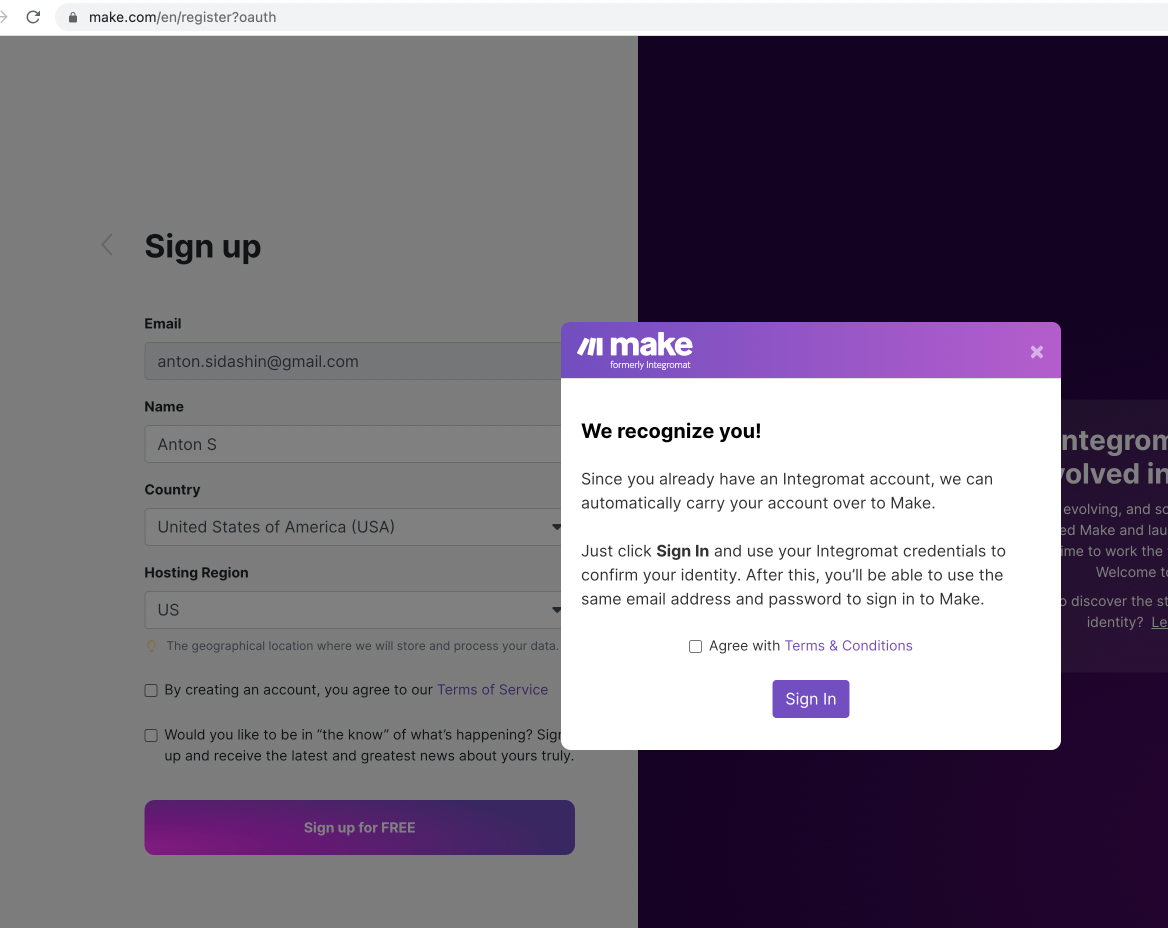
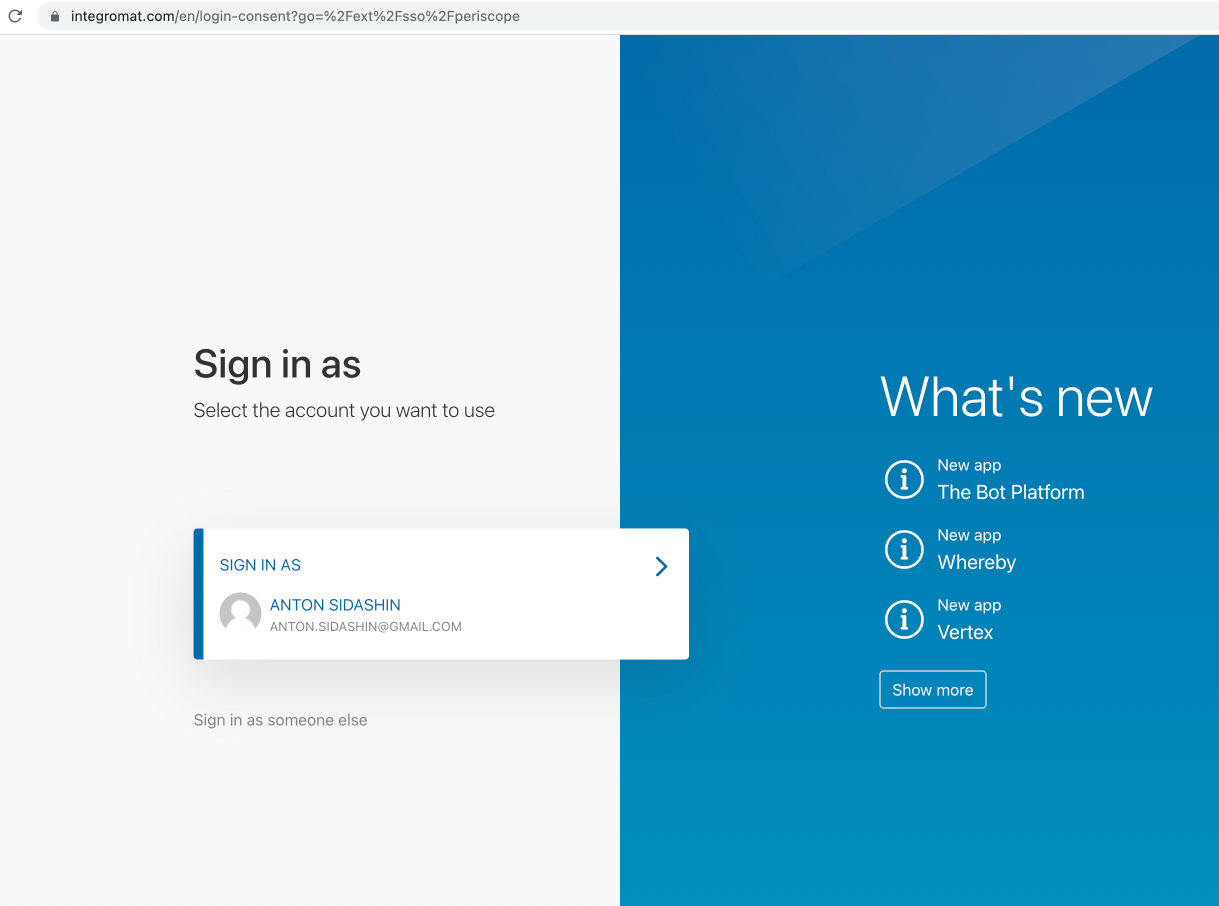
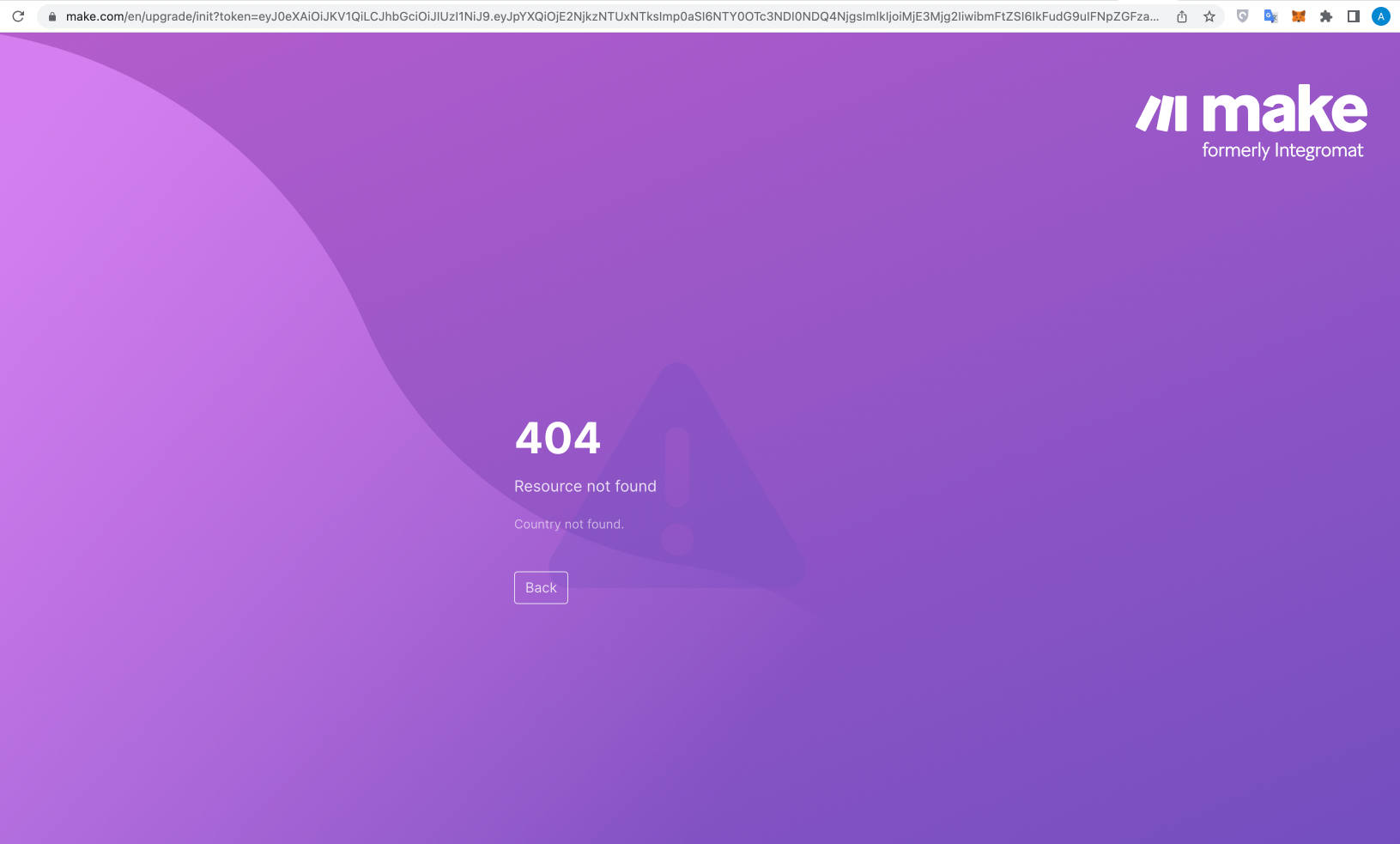
- I like their new make.com name. Do you know what I hate in the new name? It makes quick googling for solutions so much harder, because "Make" is a generic word. Integromat sounded a bit old-school but at least you could quickly google everything!
- Make.com UI to build workflows felt a bit unintuitive to me at start. Big difference in UX quality between their new landing design (which is sleek) and their older workflow builder! Setting up scheduled triggers was confusing to me compared to Pipedream: in Pipedream, you always start with the "Trigger" and this "Trigger" might be either time interval, OR some external event like new row in Google Sheet. In Make.com the scheduling process is extracted in separate controls in the bottom of the screen.
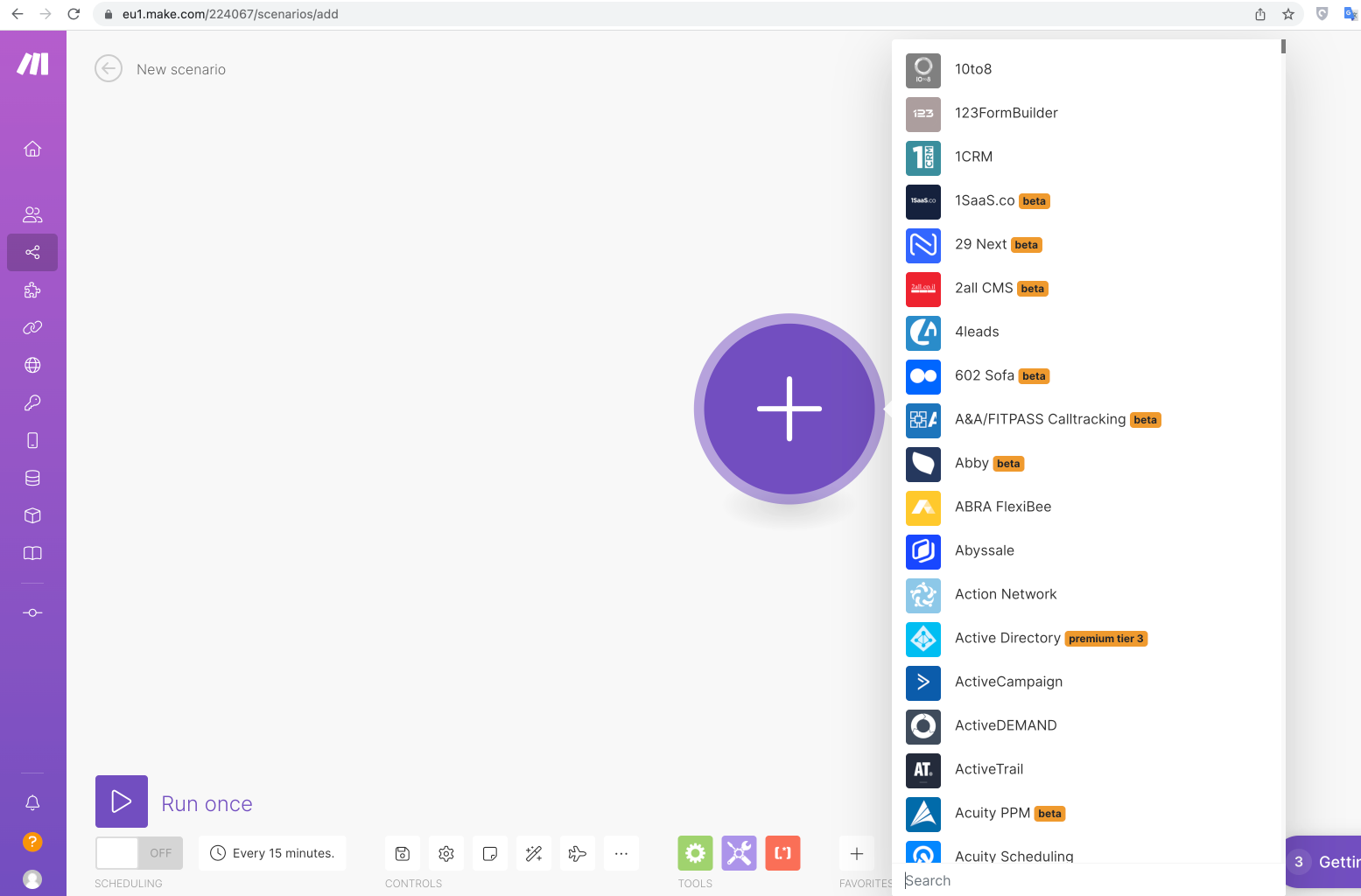
My first test make.com workflow was triggered by webhook and is sending telegram message to me:
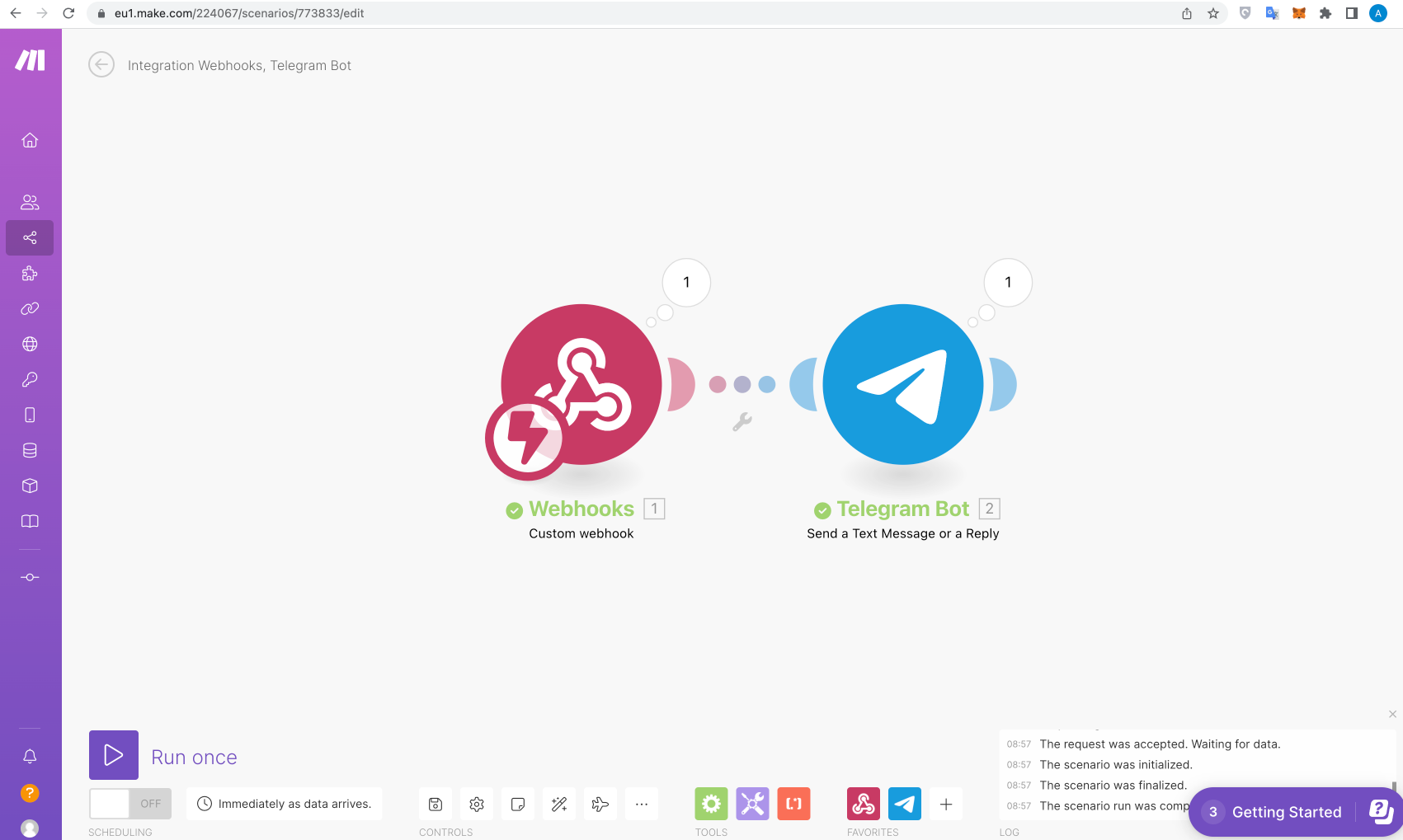
- Make.com can't run custom JS natively. This is a big con for Make.com: it does not have any native tools to run Javascript! It does, however, have "Custom JS", which is a half-baked external solution from RapidAPI (honestly, I haven't even tested this module integration, I'd really like to see something as important as running custom code built into the standard offering).
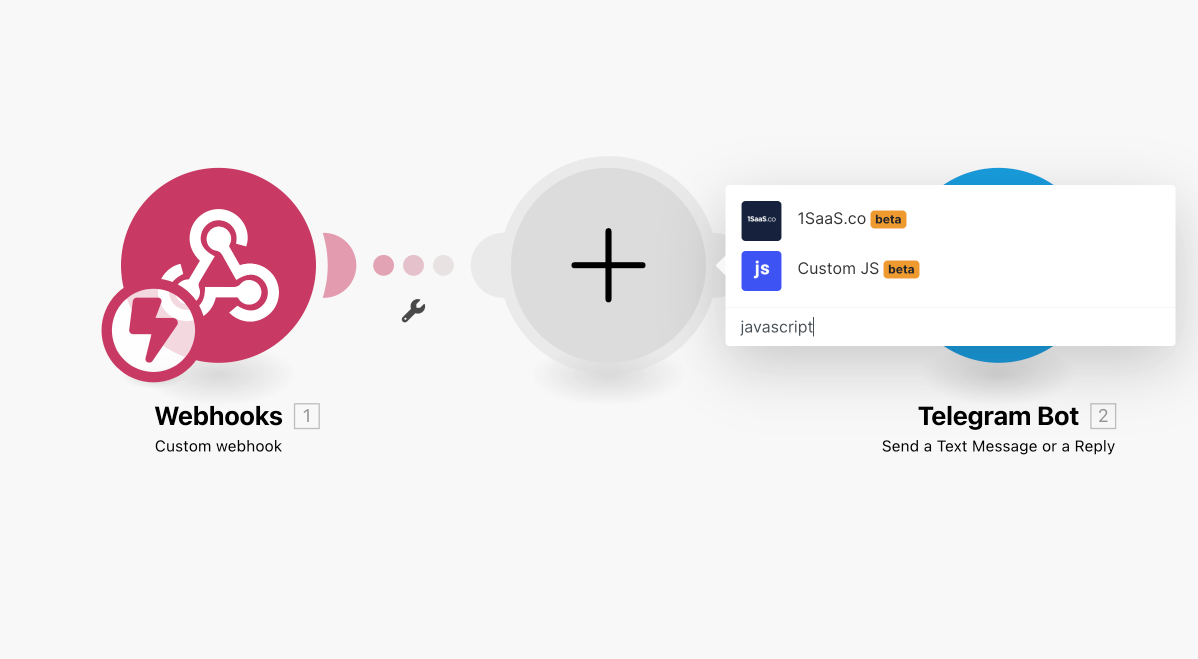
- the process of workflow update is not that obvious. In Zapier and in Pipedream, you have to click "Deploy" or "Publish" button to make your workflow "Live", and they tell you when you have new undeployed changes in the workflow. In make.com, this process is not so intuitive. The change to the workflow does not show you something like "Your workflow was updated, do you want to re-deploy?" you need to find the small "Save" button in the bottom of the screen to update your currently running workflow.
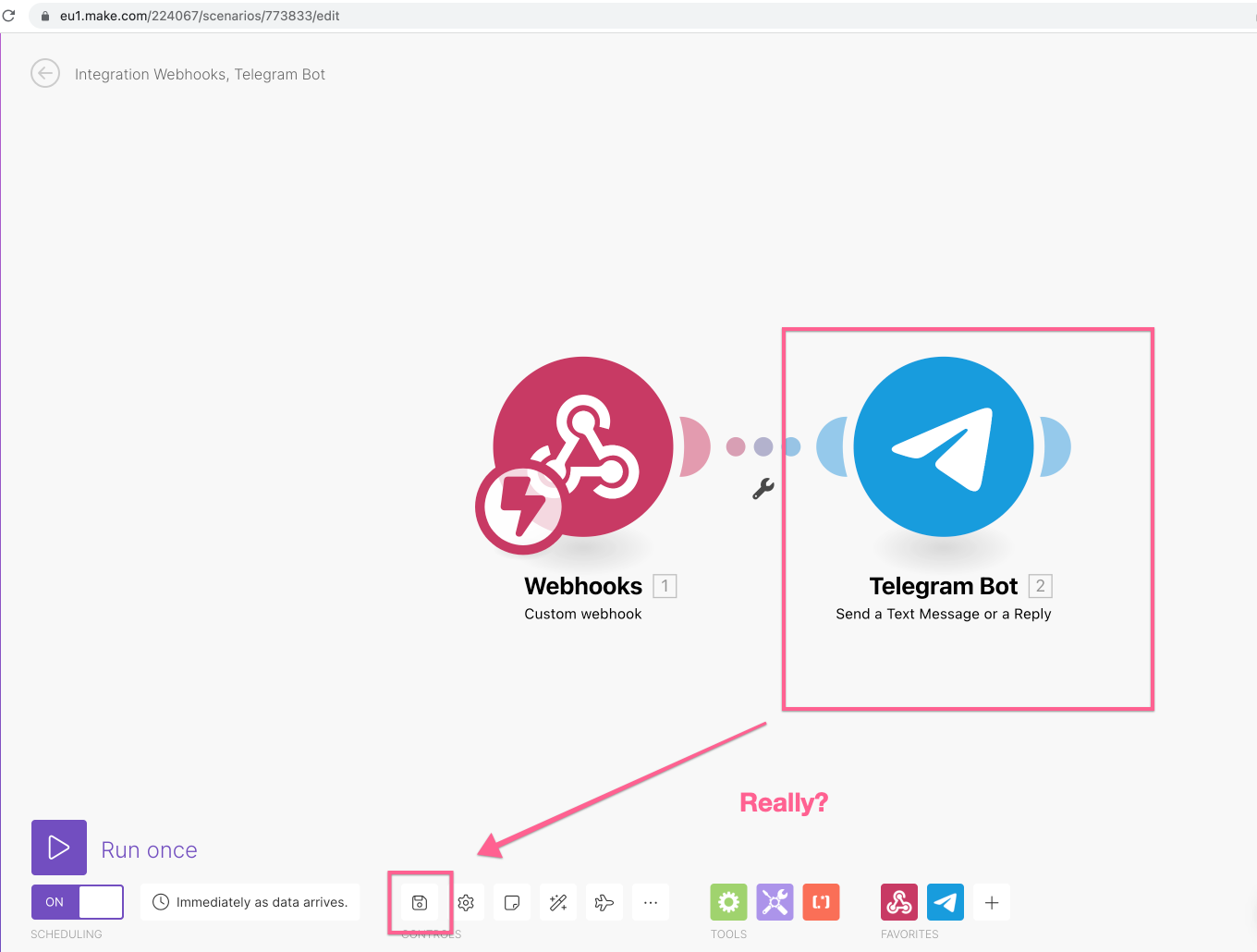
- Make.com is a solid product. All these issues mentioned above are pretty small (with exception of no JavaScript execution, this one is huge downside for me) and probably harm their onboarding of new customers, but as soon as you are up and running, it's a great product which has everything in place, and it is very flexible.
Key insights on Zapier.com
- Zapier was founded in 2011 in Missouri, United States by Wade Foster, Bryan Helmig, and Mike Knoop. It is the most mature product out of 3 reviewed, I would even say Zapier is a mainstream product for no-code automation now.
- Zapier has the most polished workflow builder UX (compared to Make.com, and Pipedream). Signup process is smooth, workflows has nice "Zap" name, working with Google Sheets is convenient, everything just makes sense. I encountered zero issues or bugs with Zapier.
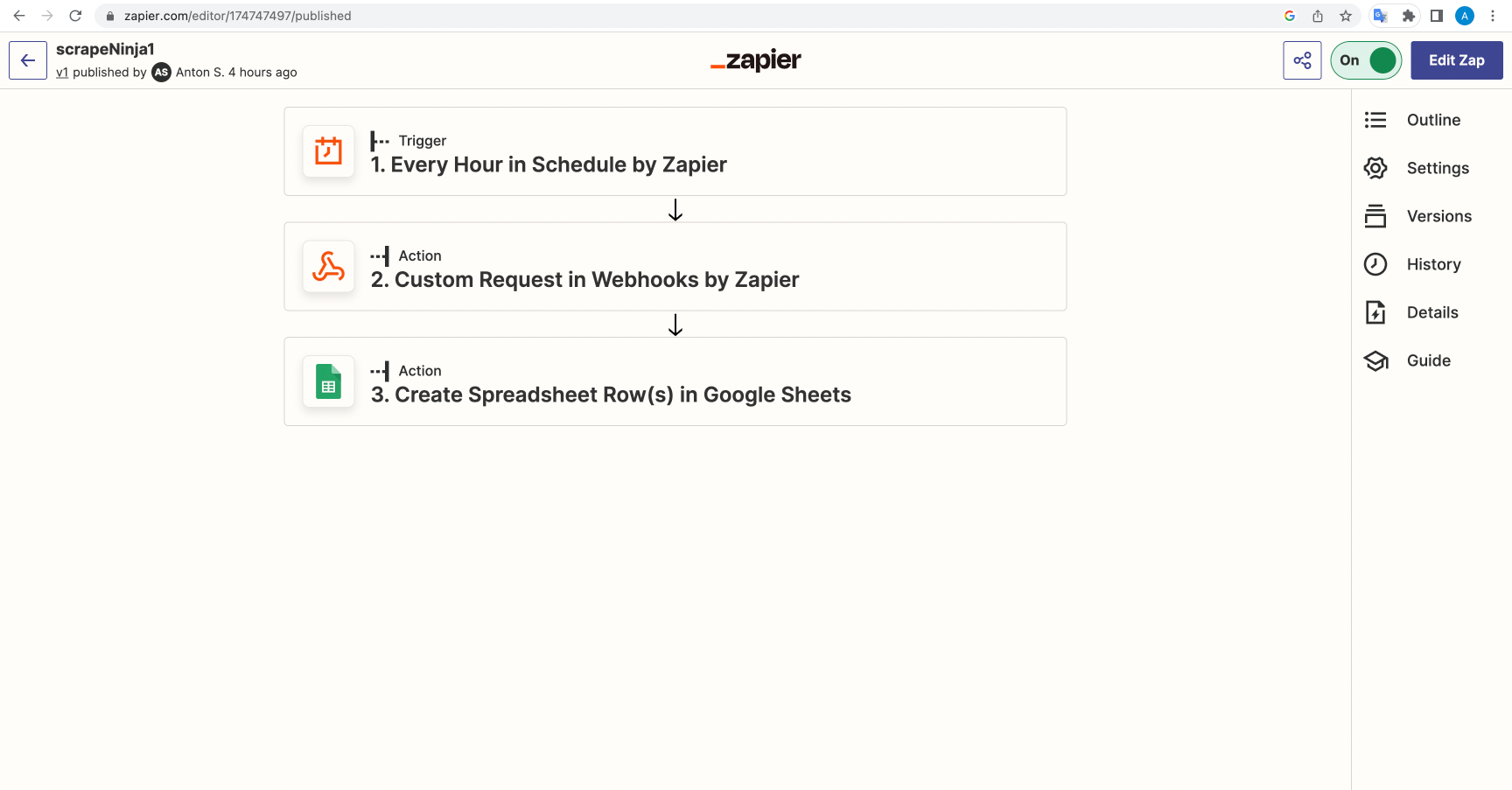
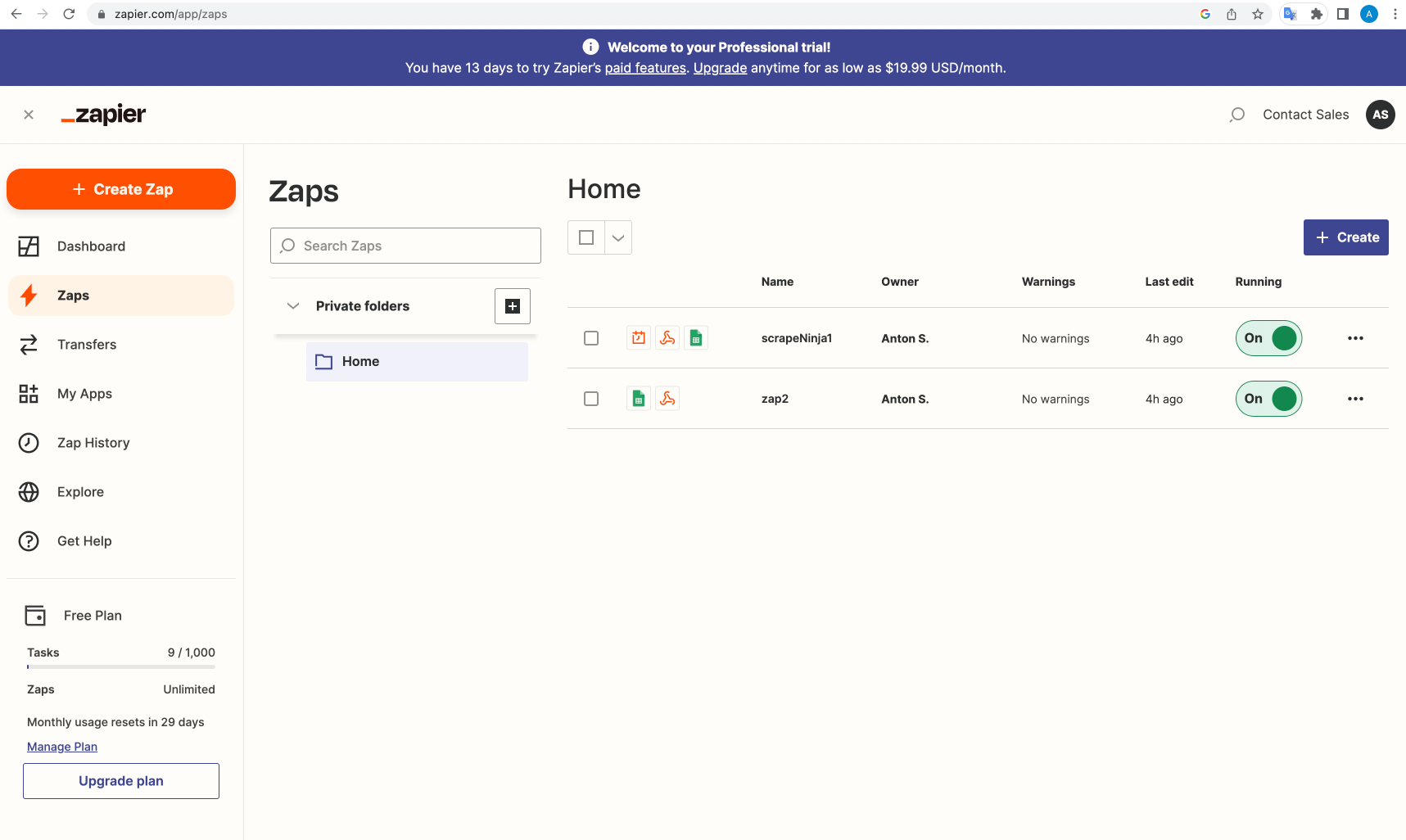
- Zapier workflow UI is clean, but slow. I love modern, blazing fast interfaces, especially if you use this UI intensively - and this is what you do in automation platforms, lots of clicks, right? Zapier UI feels sluggish and makes page reloads: here is a very basic example, when I get to list of my zaps, and then click on my Zap to get into editing it, I spend 15+ seconds to do this on my home Wifi! If I get to history of Zap runs, it again means a painfully slow full page reload.
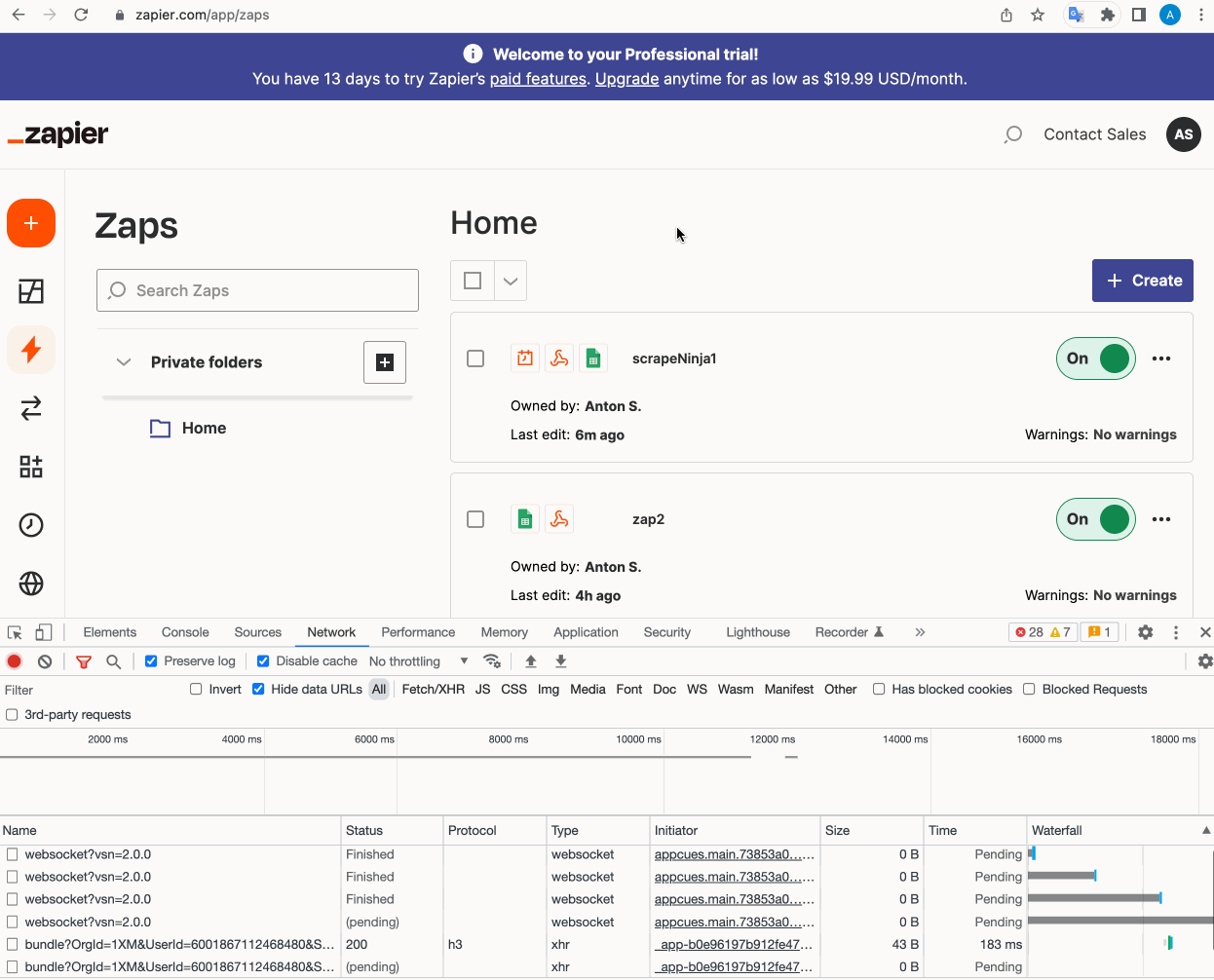
- Zapier is a no-code tool, not a low-code tool. As a developer, I had some troubles finding most basic things, e.g. how to execute a custom API request in their action - their quick actions search provided zero useful results on "API" query - it turned out, they called it "Web hooks by Zapier" - I had to google it. Everything just screams that this product was built for a regular marketing person (which is not a bad thing).
- Zapier can run your custom Javascript or Python code. But.. in case you want to use some npm package like Cheerio to extract data from raw HTML, you are in trouble. Zapier can't install any custom libraries for your code. Of course, for this particular task of extracting data from HTML ScrapeNinja will work perfectly fine, as a specialized tool which runs cheerio in the cloud, but this is just a random example, there are thousands and thousands of useful libraries on npm which you won't be able to use in your custom Zapier JS code.
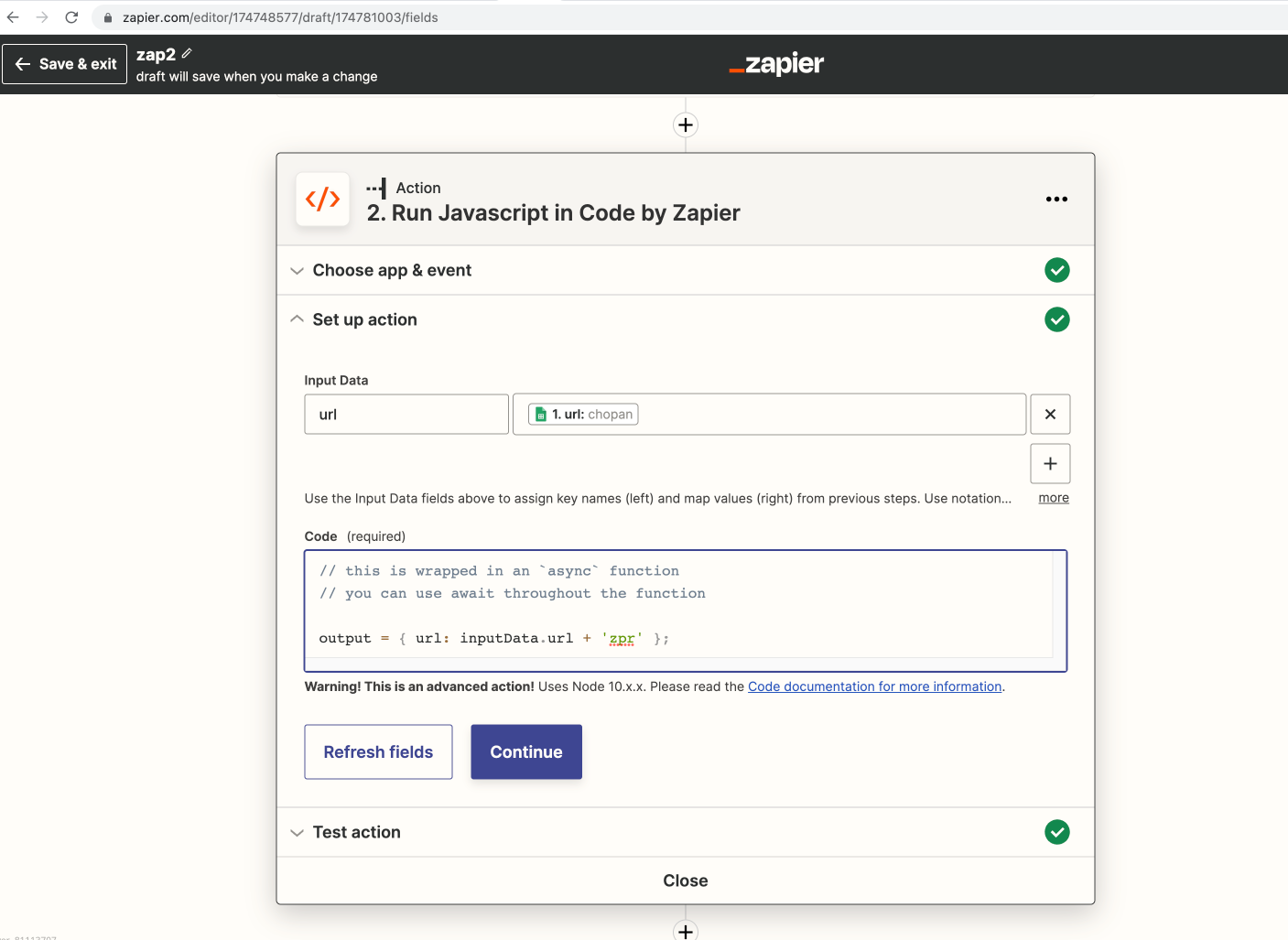
- Using "Web hooks" (doing HTTP requests to an external API) in Zapier means you are an advanced customer (compared to Zapier average customer portrait), so if you want to execute custom API calls in your Zapier, you need to pay 30 USD/mo, for their premium plan. This feels a bit weird for me as a developer.
- There is no Telegram integration to send messages via Telegram, in Zapier. This was so suprising, even weird.. I had to use "Web hooks by Zapier" to do a basic HTTP request to Telegram API to send my message. Both Make.com and Pipedream have Telegram integration available in stock, you just need to put your Telegram bot API token in the small setup form.
- Zapier is the most expensive out of 3. The free plan is very restrictive (no custom API calls) - read more below
Key insights on Pipedream.com
Since I am a weird customer, I have started my automation journey from Pipedream. You probably don't know what Pipedream is, do you? Pipedream was founded in 2019 by Tod Sacerdoti, got 20M VC investments in 2022.
- Pipedream is a new kid on the block. Founders of Pipedream took a lot of good lessons from both Zapier and Make.com. The UX of workflow builder at first glance is more similar to what Zapier offers, but when you dig deeper, more and more similarities between Pipedream and Make.com arise (for example, Telegram bot setup form is very similar in Make.com and Pipedream, and is absent in Zapier).
- Pipedream is a low-code tool (not a no-code!), and it is targeted at developers. It does not hide the complexity of a real programming when I need to write some complex logic in a good old JavaScript, but it wonderfully improves the experience so I can minimize this. I connect my Google Account and setup my Google Sheet connection using Pipedream visual tools in 1 minute, and I am writing Javascript to manipulate an array of sheet rows right after it on the next step. This is indeed a low code at its best. At the same time, Pipedream won't be a good fit if you don't have experience writing JS/Python code!
- Pipedream is an agile project with small&responsive community. When I got to Pipedream forum, introduced myself, and described how I use Pipedream along with Scrapeninja, they added Scrapeninja API to integrations by themselves! With Zapier, to get listed on their developers platform, you have to go though an approval process pretty much like on Google Play and Apple App Store. Either approach is not a bad thing, with Pipedream it's just a sign of smaller-scale product which moves fast, personally I like Pipedream approach a bit more.
- Again: Pipedream treats JavaScript as a first class citizen, you can even use external npm packages, like cheerio, to do complex tasks. Very cool.
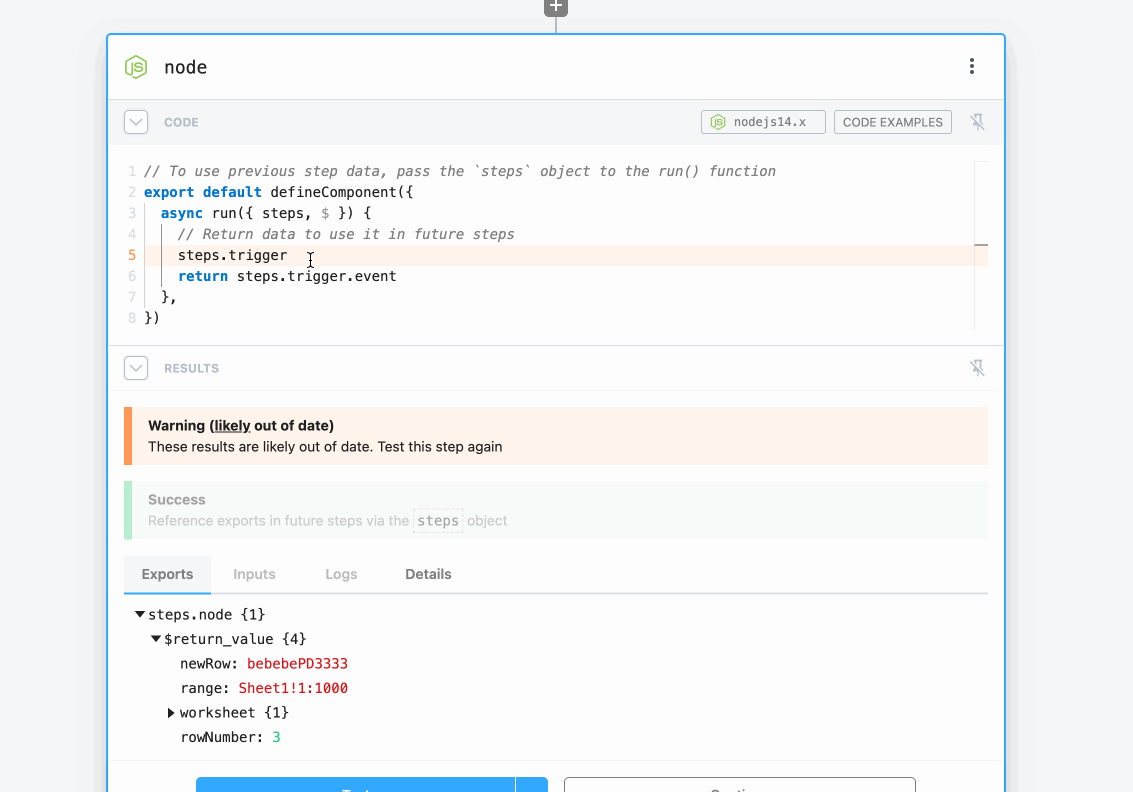
- Pipedream has raw data source logs quickly available, so, for example, I can check how Google Sheets trigger their events and how Pipedream sees it. This makes debugging experience so much nicer. Very useful for a developer, though a bit scary for a random Zapier user.
- Pipedream has a nice UI, which may be is not as polished as bigger player UIs, but it gets the job done nicely. And the builder is so fast! Just compare this to Zapier:
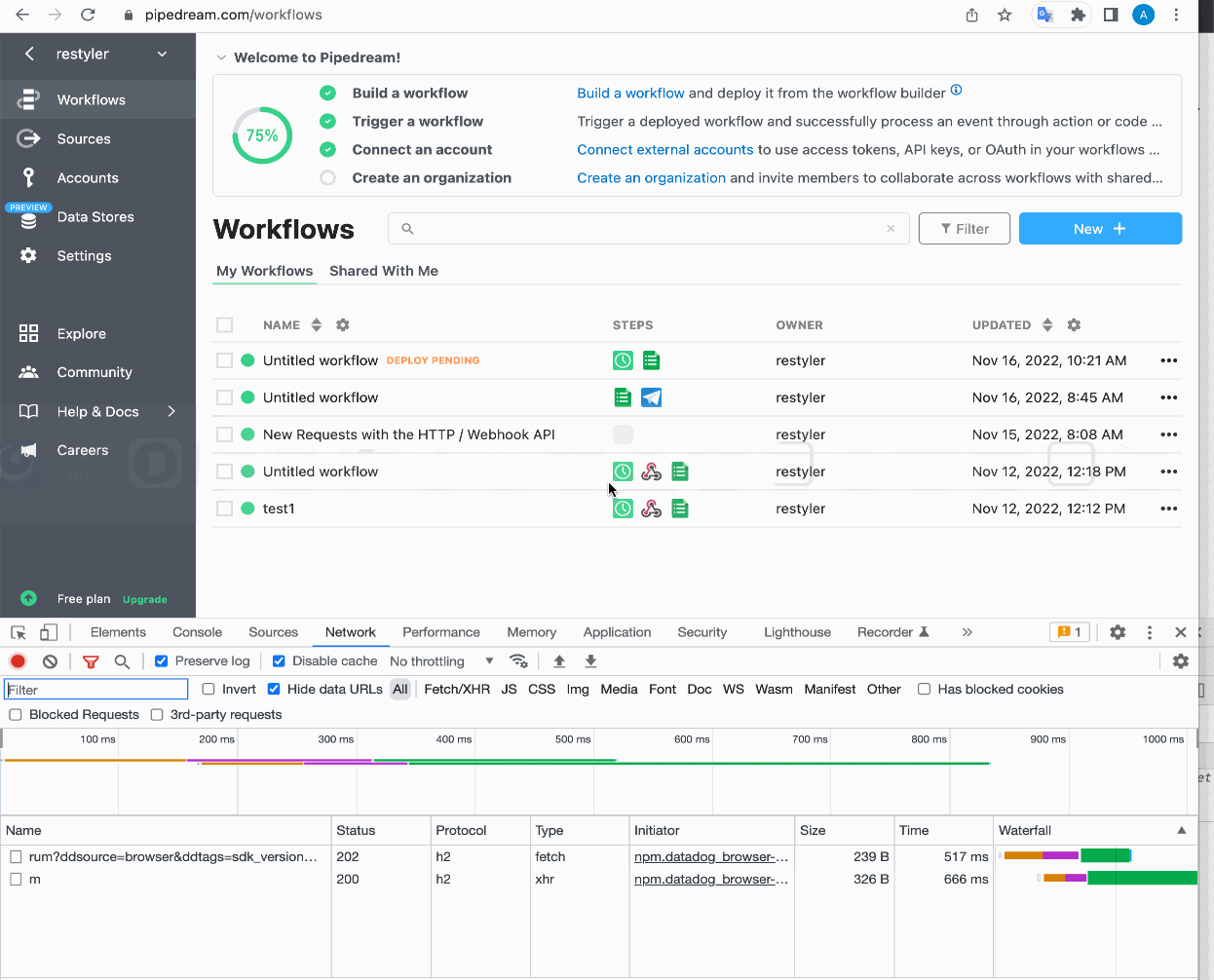
- It is the smallest player out of 3. Some basic features are lacking, for example, there are no zero code iterators to implement loops (so you can't iterate over Google Sheets rows and do some task for every row, without deep dive in Javascript).
Features (number of integrations)
Most articles on the internet, which compare Zapier with Make.com, calculate the number of integrations and consider more is better. I have to disagree with this approach. The fact that Zapier claims 5000+ integrations, but does not have native Telegram integration says it all. I also don't really care how many thousands of niche products were integrated into Zapier, if using arbitrary custom API by executing good old http requests requires to purchase 30 USD/mo plan, compared to free plan on Make.com and Pipedream. Mainstream products (Google products, Airtable, Dropbox, Notion) are well integrated in all 3 products.
The pricing
Screenshots of pricing of all 3 products:
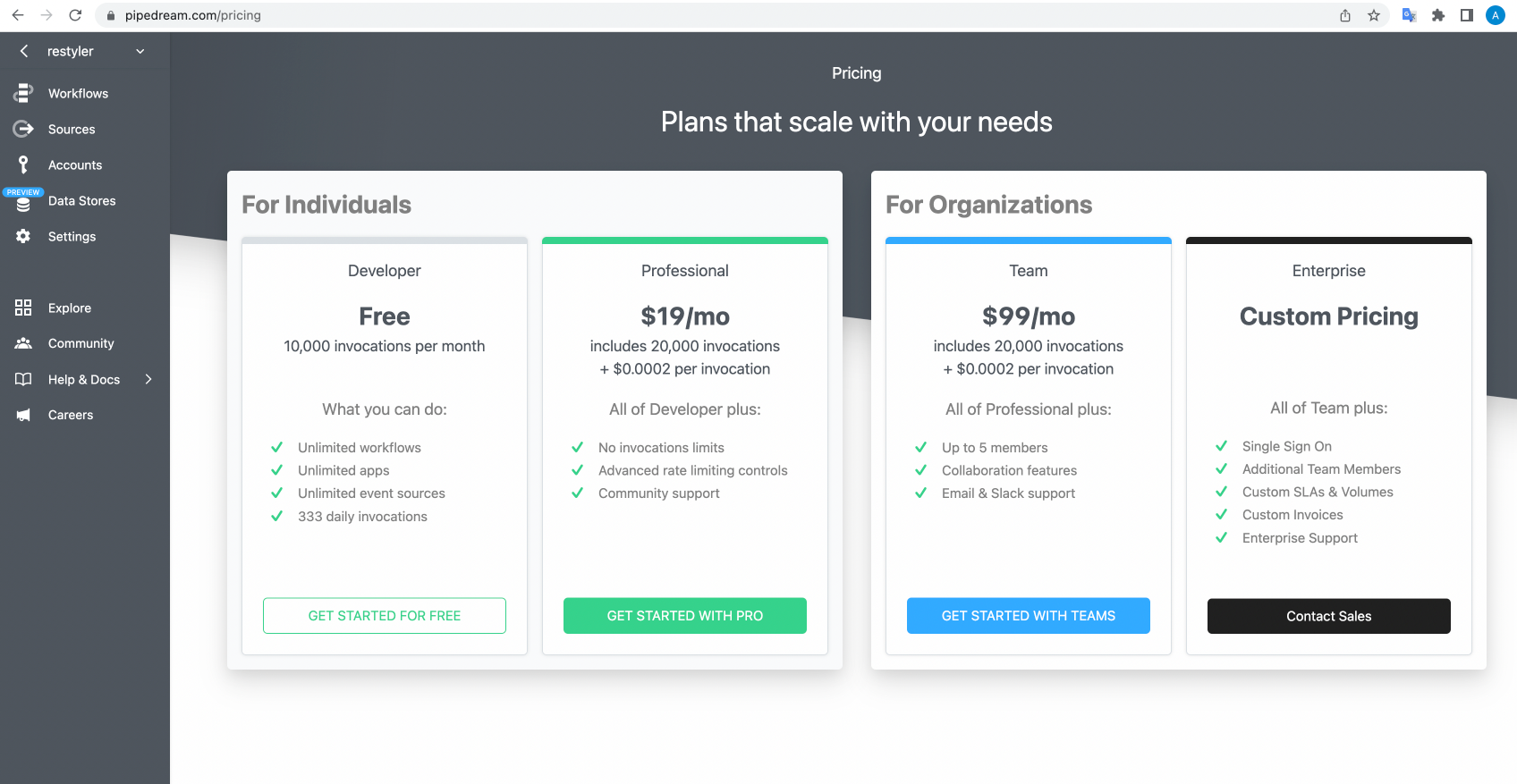


[UPD] Key takeway on pricing:
While it might not be obvious when looking into pricing pages, Pipedream is massively cheaper than Make.com and Zapier. Pipedream bills you on Invocations of your scenario, while Make.com bills you on "Operations" and Zapier bills you on "Tasks". The difference is that, for example, if your scenario has a Google Sheet with 100 rows and you want to execute some simple action for every row, Make.com and Zapier will bill you 100 "billing points" (for each individual action invocation in your scenario) while Pipedream will bill you only one 1 "billing point" for the whole scenario execution. This might make a huge pricing difference for certain cases. The other side of this coin is that Pipedream, having this very simple pricing model, has now spent several years trying to integrate no-code loops builder into their scenarios, despite this being a #1 feature requested by customers. I am pretty sure loops (which can increase the complexity of average scenario by many orders of magnitude) directly contradict with this pricing model (this is just my pure speculation, I don't know if this is indeed the major blocker for this feature).
Free plan
Being a bootstrapped SaaS founder, I understand that the business needs to earn money. But, I don't like when the free plan of a product is not really functional and I can't use it for real world tasks for at least a couple of weeks to really understand how the product brings value to myself, this just does not feel good to me.
- Make.com is obviously a bigger player, and it gives you 1000 "ops" per month in their free offering.
- Zapier gives you 100 "tasks" per month and a pretty restrictive free plan (no custom API execution, no multi-step workflows). Zapier basically pushes you to the paid plan, right off the bat, and gives your the trial of their premium plan right after signup, so you get hooked up on premium features which are not premium in Make.com or Pipedream. Zapier is a very nice product with pushy marketing team behind it, I would buy Zapier stocks :) but from a customer prospective this does not look too good to me.
- Pipedream is more of a niche player and it instantly gives you 10000 executions per month. There are no big restrictions that I have noticed in these free plans.
Paid monthly plans
Another sales trick of Zapier is that their monthly plans are much more expensive than annual plans. The basic paid plan of Zapier, when purchased on a montly basis, costs 30 USD and includes just 750 executions. Or, you can pay 20 USD per month if you get annual subscription.. I would not consider 750 executions as functional for my use case, so I need to shell out hefty 133.5 USD to get mere 5000 tasks of my workflows, when billed monthly.
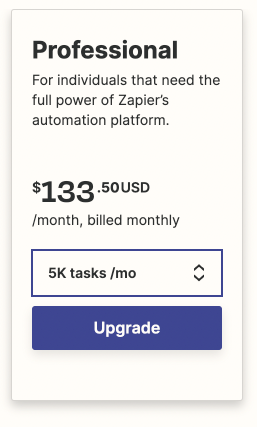
With Make.com, I will pay 10.59 USD per month, for 10K executions.
With Pipedream.com I will pay 19 USD/mo, for 20K executions.
So, Zapier is at least 10x more expensive than Make.com or Pipedream, while these two have similar pricing for an smaller paid customer. UPD: I was wrong. Pipedream might be massively cheaper than Make.com because Make.com bills you on "Ops" (and you might get 10 or 100 ops spent while executing a single scenario) while Pipedream bills you on "scenario execution. See the details above.
Conclusions
All 3 products are good and get the job done.
Zapier is a polished mainstream product with hefty price tag which is perfect for non-technical users. Slow visual builder. They have great marketing and they are famous. You can't go wrong with Zapier if their pricing is OK for your use case.
Make.com is a very nice middle ground - it is a big enough player, visual builder is not perfect, but as soon as you get used to it - it's working fine. Very feature rich. Adequate pricing for thousands of executions. It will work for both technical and non-technical customers. Huge downside for me is no custom Javascript support out of the box. Rebranding process will probably finish soon and they will iron out all nasty small issues with the UI.
Pipedream.com is a very exciting product built for developers. Smaller but nice community. Amazingly fast workflow builder. Wonderful custom JavaScript support out of the box. I really like these guys, they have huge potential, and I am pretty sure they will be fine!
Me personally, I will probably use Make.com most of the time, if I am sure I don't need custom code (because Make.com is good enough, has great pricing, and it has no-code iterators), and I will use Pipedream for lower-level tasks where I might want to write pieces of custom JS code. [UPD May 2024]: I am now using self-hosted instance of n8n for most of my workflows.